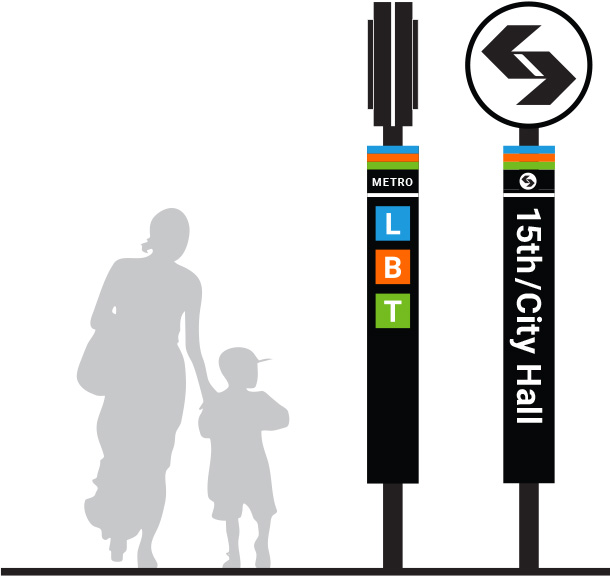
Today, September 7th, 2021, Southeastern Pennsylvania Transportation Authority (SEPTA) unveiled a new wayfinding system, named SEPTA Metro, which aims to completely overhaul how riders identify lines and services.
SEPTA Metro would begin by renaming lines to match more identifying symbols and colors rather than names and numbers. Here’s a rundown of what is to change, by mode.

- Market-Frankford Line would become the L line, and as the graphic to the right implies, the name comes from the fact that everyone already refers to the Market Frankford Line as the EL.

- Broad Street Subway would be come the B lines. With numbers denoting each service type.
- B1 would be the Broad Street Line Local
- B2 would be the Broad Street Line express
- B3 would be the Broad-Ridge Spur

- Norristown High Speed Line This would be a bigger change, because the name would first change to Montgomery County Line, as there will be two versions of the NHSL at some point. But then becuase it would become Montgomery County, the symbol will become M instead of N.
- M1 would be local service from 69th Street T.C. to Norristown
- M2 would be express service from 69th Street T.C. to Norristown
- M3 would be local service from 69th Street T.C. to King of Prussia
- M4 would be express service from 69th Street T.C. to King of Prussia
- M5 would be a Spur Line from Norristown to King of Prussia

- Subway-Surface Trolley Lines would be unified as the T lines (Tunnel Trolleys). However they would be separate by number. The graphic below shows what each number means


The Girard Avenue trolley, or G, is meant to be different than the “tunnel” trolleys. So much so that it bears a different color than the rest of the lines. This would replace route 15. Since the 15 itself isn’t in full service yet, there’s still much more planning to be done with the G.

Suburban Trolleys 101 and 102, which spend most of their time in Delaware county, would be rebranded as the D trolleys to reflect this. D1 would replace the 101 and D2 would replace 102. Everything else is straightforward.
Signage

SEPTA Metro also aims to replace the signage at stations, on platforms, and at entrances. According to the plan, the current signage is too confusing or inconsistent to understand. Some signs even imply things that are not relevant to the trip. Specifically, the statement was a sign noting service to “Penn’s Landing and University City” which is not reflected on any map. The new signs will be more uniform across lines, reflecting a more universal approach to the direction of travel and line symbols.
To the right, we have an example of how this would be applied in practice. The signs directing passengers to the westbound platform would note the direction of travel in big bold print, with the line and terminus being directly under this. The eastbound platform makes it clear that you’re on the eastbound side.
The picture to the left shows how a subway entrance would look. Signs would note which line types operate here, as well as which specific lines serve said station. Here we have the Market-Frankford Line (L), Broad Street Line (B), and Trolley lines (T) all accessible from this station. You also can see how the sign has colored stripes reflecting the different modes, as well as the location of the station. If you want more information on this plan it’s recommended you check out the plan site here.
Implimentation
SEPTA is currently still working out plans for the SEPTA Metro and is currently doing community outreach for feedback. They also offer a full-service map that not only details what is to come with each line as of right now but gives a preview of how the current system interacts with the bus system. It also gives a more in-depth look at what all is to change. If you want to see my specific opinions on this, check here. For now, leave your own feedback at https://map.septa.org.








Give your feedback on this post!
Comments